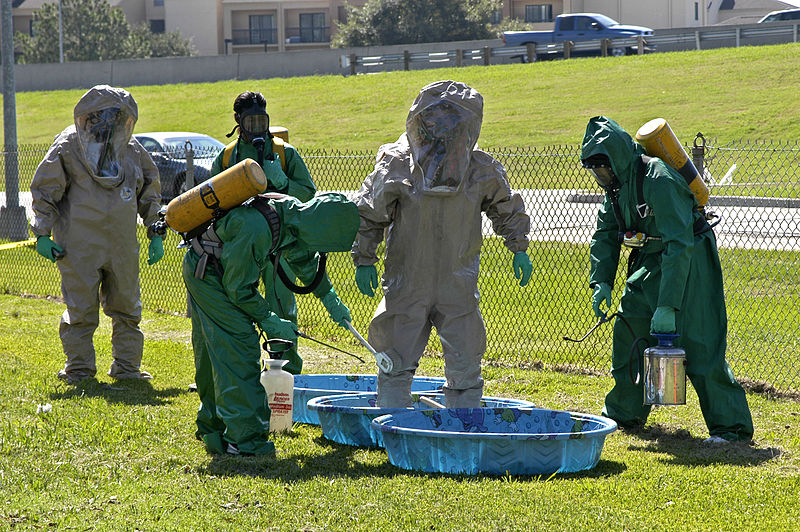It’s cost more than $4 million, but an army of scientists, ecologists and other specialists was mustered by Univar Canada to battle the chemical spill that resulted from the Stewart Centre fire last August. All results indicate there are no long-term effects in Mill Creek.
Runoff from firefighting efforts flowed into storm sewer systems and then Mill Creek and Okanagan Lake, where nearby residents found dead fish floating in unnatural-coloured water in the creek the day following the fire.
Univar Canada, one of the country’s largest chemical distributors, had a variety of chemicals stored in the centre, and hired wildlife biologists, riparian ecologists, water quality specialists and fish biologists to do a hands and knees search to learn what had been affected by toxic runoff from the firefighting efforts.
Jim Bird, the safety, health and environment manager for Univar, says the company has often had practices for such situations, but never had to use that knowledge in a real situation prior to the Stewart Centre fire.
“We pulled out all the stops,” he commented.
At one point, he said every vacuum truck in the province was in use in Kelowna cleaning out storm drains, catchment basins and even creek water that had been contaminated by pesticides and other chemicals.
The very-contaminated water was trucked immediately to the coast for treatment, while the lightly-contaminated water was stored here and later trucked away for treatment, he said.
Scientists overturned rocks, counted songbirds and investigated reports of dead ducks, which incidentally, turned out to have died from other causes.
They sampled fish and sediments, water and plants—both immediately and long after the plug of chemicals went through the system—and after that first week there were no significant toxins found in the system, said Bird.
However, they continue to conduct studies and scientists will be doing more water sampling again next week.
They have also set up a hatchery test, using sand, gravel and sediments from the bottom of the creek in a hatchery box, with eggs taken from a hatchery.
Once the kokanee hatch this spring, they’ll study their growth and development to ensure there’s no toxicity remaining in the creek’s sediments.
However, Bird noted that today’s chemicals are quite different from those of decades ago.
“Gone are the days of the residual chemicals. Today’s products have to break down, so the substances that entered the system aren’t likely to be there still in the same form,” he explained.
He added that any chemical is a matter of dose response, so a little can have a favourable effect even if a lot can have a fatal result. “We even washed out the storm drain system and collected all that up.”
Sacks of carbon were used to dam the creek in two places, so the creek’s water would have to flow over them. Carbon acts as a sponge and chemicals tend to cling to it.
Bird said he has no answer to the concerns expressed on the Kelownacapnews.com website by a reader who lives along Mill Creek, that there are far fewer ducks along the shores today than there used to be.
That reader said he doesn’t expect there will be any young this spring, but no evidence the scientists have uncovered in their investigation provides a basis for that conclusion.
“We’re not just brushing it off, but we’re optimistic there won’t be any impact like that,” commented Bird. “All indications are that there are no long-term impacts.”
Today, Bird said the company is doing things differently and not storing any quantity of chemicals in the Okanagan.
Since the construction of the Coquihalla Highway; a reduction in the amount of acreage in apple orchards in the Okanagan; the implementation of the Sterile Insect Release program, and a move to vineyards which don’t require as much chemical management, there’s less need for storage here in the valley.
Instead, Univar now stores chemicals at certified facilities in Abbotsford and Airdrie, Alberta and they’re shipped to the Okanagan as needed, he said.
No cause for the fire was ever determined, due in part to the amount of damage that resulted. Total losses were estimated at more than $5 million to the seven businesses that were located in the Kirschner Road centre.
by Judie Steeves – Kelowna Capital News
posted Jan 18, 2011 at 6:00 PM— updated Jan 19, 2011 at 10:14 AM
Source: Capital News


Recent Comments